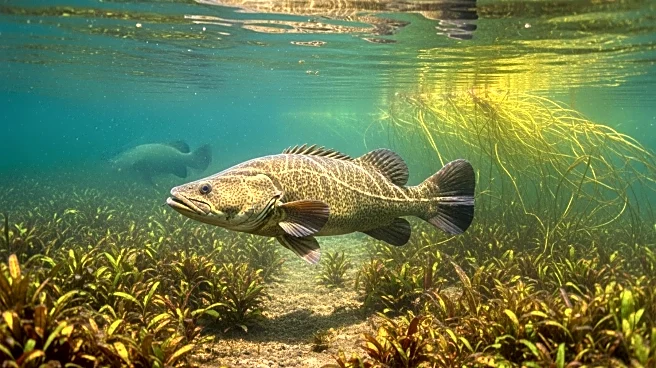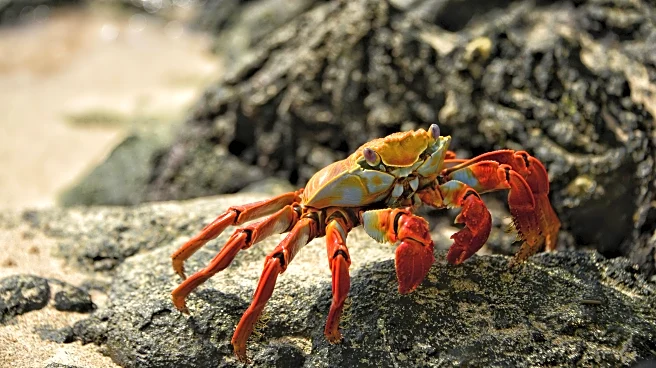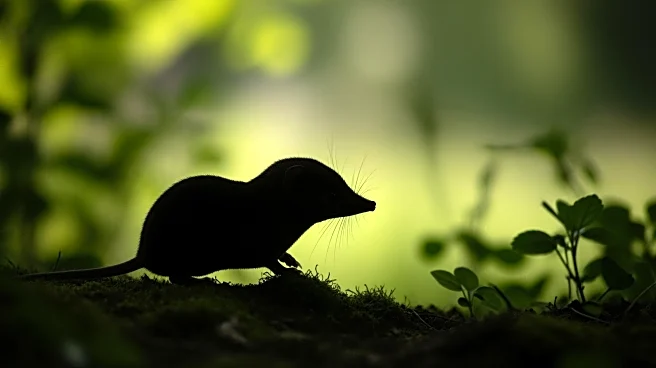What's Happening?
An Australian freshwater Murray cod named Arnie has set a new record by swimming 530 miles along the Murray River, according to researchers from the Arthur Rylah Institute. The fish, tagged in early 2022,
initially traveled 470 miles upstream following the removal of barriers that allowed floodwaters to pass through. This journey was facilitated by the Living Murray program, which aims to improve river health. Arnie's extensive travels were only recently discovered when researchers shared data with colleagues. The Murray cod, an apex predator, is a vulnerable species under Australia's Environmental Protection and Biodiversity Conservation Act, with populations declining due to overfishing and habitat degradation.
Why It's Important?
The record-breaking swim by Arnie underscores the importance of river management and conservation efforts in maintaining healthy ecosystems. The Murray cod's ability to travel such distances indicates a positive response to environmental restoration initiatives like the Living Murray program. This development is significant for conservationists and policymakers as it highlights the potential for species recovery when natural habitats are restored. The findings could influence future water management policies and conservation strategies, benefiting both the species and the broader ecosystem.
What's Next?
Researchers will likely continue to monitor the movements of Murray cod and other species to assess the long-term impacts of habitat restoration efforts. The data collected from Arnie's journey could inform future conservation strategies and water management policies. Additionally, ongoing collaboration between research institutions and government agencies will be crucial in ensuring the continued success of programs like the Living Murray initiative.
Beyond the Headlines
The story of Arnie's journey also highlights the broader implications of human intervention in natural ecosystems. The removal of barriers and restoration of natural water flows not only benefits individual species but also contributes to the overall health of the river system. This case serves as a reminder of the delicate balance between human activity and environmental preservation, emphasizing the need for sustainable practices.












